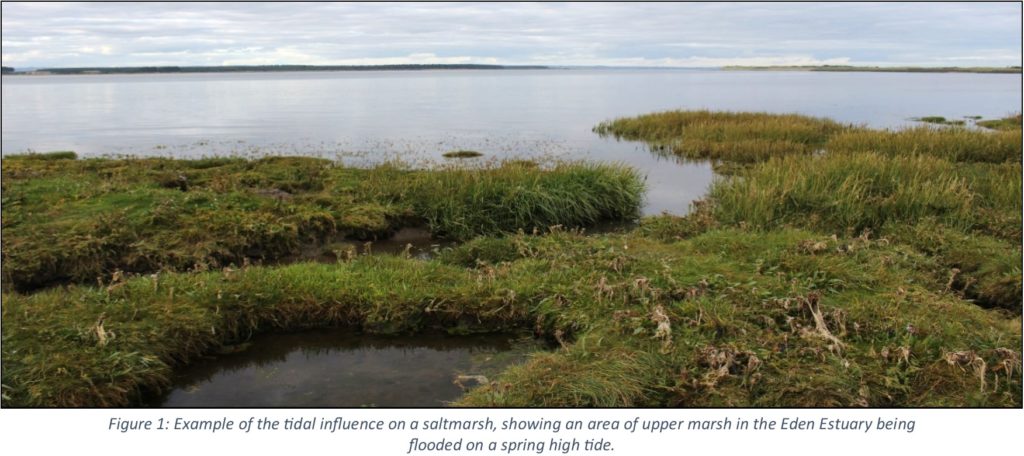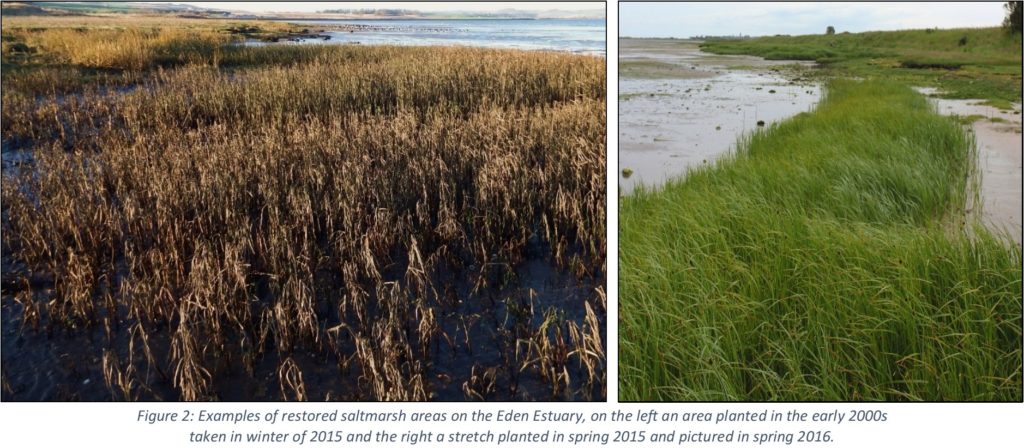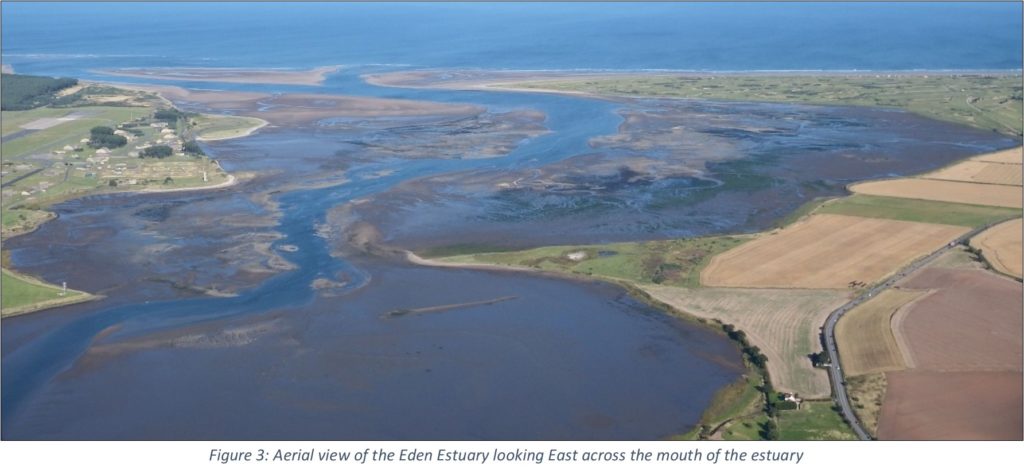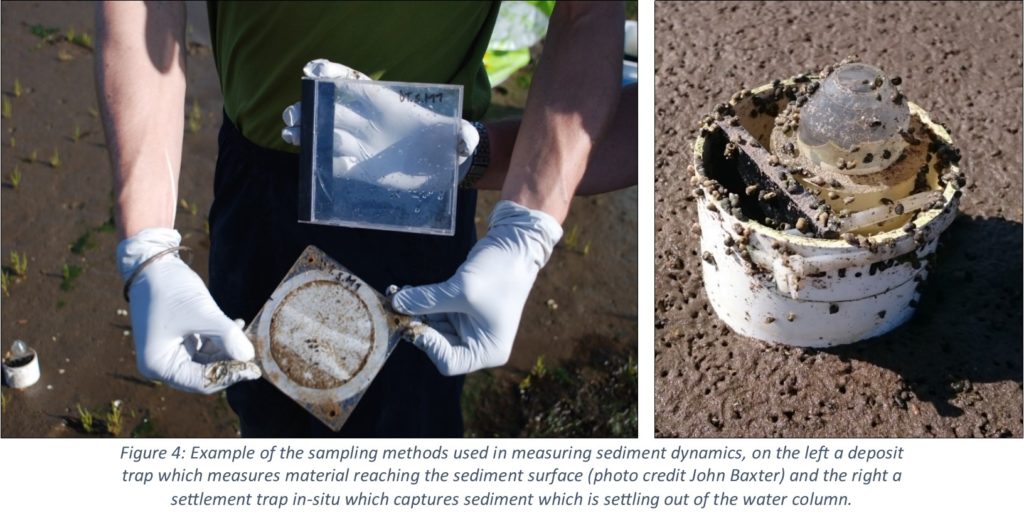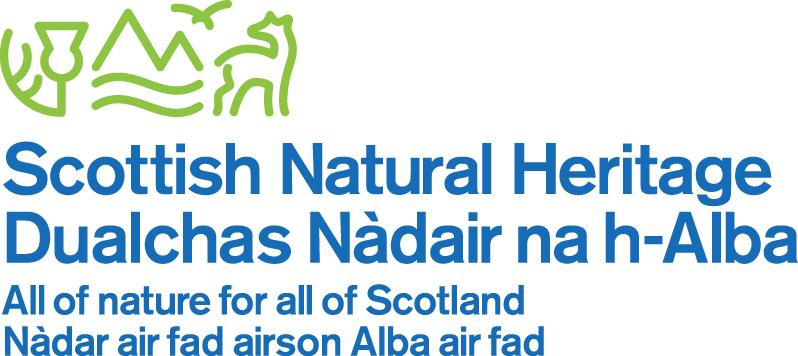Saltmarshes and carbon storage
Intertidal coastal areas, such as saltmarshes, are highly dynamic zones in which the land and sea interact (Figure 1), combining to create unique and valuable ecosystems.
These areas have experienced rapid loss through activities such as land reclamation and the construction of hard coastal defences and are vulnerable to the changes predicted to arise from climate change; such as altered relative sea levels and increasing numbers of extreme weather event. Thus, efforts to restore and conserve them have become more important. Restoration efforts typically rely on securing funding to cover implementation costs, which can be a barrier to otherwise viable projects. However, the resulting beneficial services from restoration could serve to provide a degree of subsidisation through the sale of these benefits via ‘Payments for Ecosystem Services’.
A service of increasing importance in the current climate change setting is the ability to sequester carbon (Blue carbon) providing a degree of climate change mitigation. Saltmarshes, along with other intertidal ecosystems, are some of the most prolific sites of carbon storage, by unit area being more efficient than terrestrial forests.
This characteristic is due to the way in which a saltmarsh develops. Initial pioneer colonisers help stabilise the mudflat which facilitates the further growth of vegetation, which encourages the deposition and retention of water-borne sediment as flow is reduced through their stems. This results in an accumulation of sediment and alters the elevation of the area allowing different vegetation to grow which are less tolerant to tidal flooding. This process continues with deposition, erosion and vegetation working in concert to reach a relatively stable equilibrium; the resulting saltmarsh will consist of deep organic rich sediment from accumulation and root biomass in which carbon is stored.
The degree to which restoration can provide this benefit depends on various factors, crucially such as, restoration success which is determined by prevailing environmental conditions such as sediment input or tidal characteristics. This project aims to assess the way in which the existing restoration project on the Eden Estuary have altered the potential for carbon storage therein.
Study area
Saltmarsh restoration efforts on the Eden Estuary in Fife (Figure 3) have taken since the early 2000s, using direct transplants from donor marsh sites within the estuary to successfully create new/extended areas of marsh adjacent to existing stands (Figure 2). This provides a valuable system in which to study the development of restored areas and the relationship with carbon storage potential.
Field research
To quantify the additional benefit offered by restoration it is necessary to quantify carbon storage potential under ‘business-as-usual’ settings (mudflats) and in the restored marsh. Furthermore, data is collected in existing marsh areas to compare current differences and forecast potential ecosystem function. To do this various data on sediment dynamics, elevation changes, vegetation structures, seasonal variation and carbon content contributions are collected to gain and fuller understand these benefits.
- Sediment dynamics – measurements of the rates of sediment surface deposition in comparison with the potential amount which is settling out of the water column (Figure 4) and the relative contributions of sedimentary carbon.
- Remote sensing – using terrestrial laser scanning technology to generate 3D maps (Figure 5) of the estuary to quantify seasonal changes vegetation; such as height and expansion.
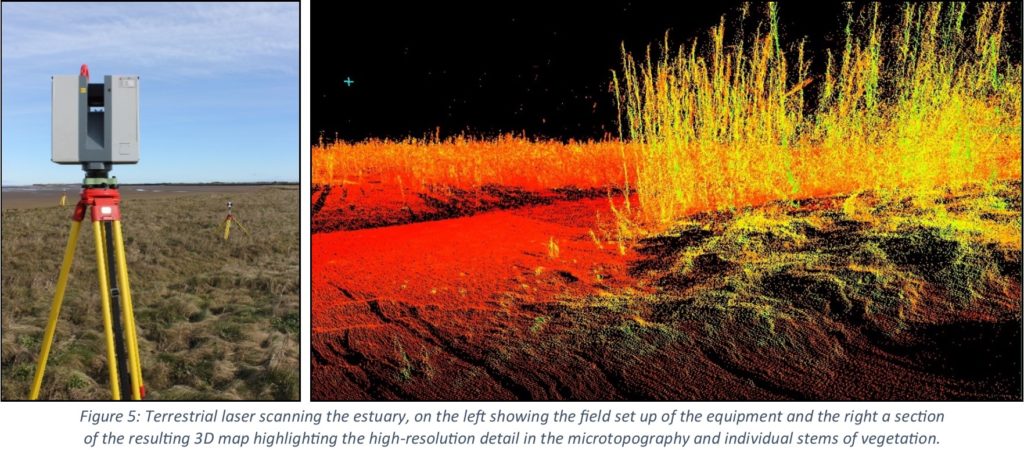
Blue Carbon subsidisation
The data collected from this research will be used to estimate the potential monetary value that could be expected for the sale of additional carbon storage service in the restored areas. It is important to also estimate over what time-period this could be expected to take place and how the long-term continued storage could develop. These values can provide guidance as to the degree of subsidisation a given project could expect and potentially facilitate the investment of such restoration through alleviating, at least to some degree, any financial barriers.
